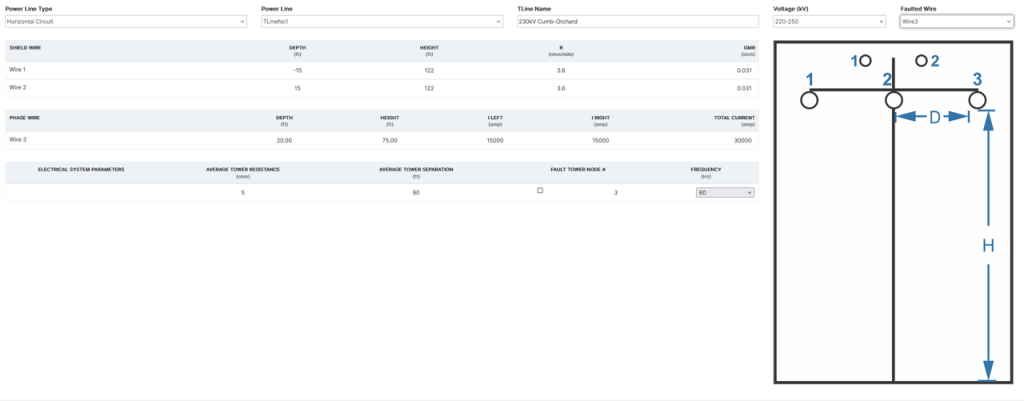Data Input for I (amp)
The number of data inputs regarding Power Transmission Lines is approximately 25 for Steady State and Fault results. What does this mean is there are infinite combinations that could be run. However, most of them are default values; however, rarely does the client use these default values.
Estimating the Maximum Load Current is as follows:
- Multiply the default AC Current as shown in the UI by factor of 3
- Example a 250 kV line could be 300 Amps or (3 x 300) or 900 – 1000 Amps

Data Input for Power Line Voltage and Type
Estimating the voltage on the power line (See Below and Types). Also, it can also be labeled on the pole or tower for lower AC voltages.
For lower AC voltage Distribution systems, the number of insulator rings/discs can be used to estimate the voltage in kV. One insulator disc can handle 11 kV, so to get the voltage rating of a transmission line simply add up the number of insulator rings at tower. Multiply the number of insulators by 11 kV and one can get an idea about the voltage rating of a transmission line. Typically, a 33 kV line has 2-3 number rings/discs on the insulators.
For higher AC Voltage Transmission Systems such as 220 phase voltage, each insulator ring/disk can tolerate up to 11 kV, for example when we want to find number of 220 kV, first calculate phase voltage for the 220 kV, and then divide by 11 kV.
- Phase voltage=220/1.732 = 127kV
- Number of discs=127/11 = 11.5
- Its value varies from 11-13 discs
Power Line Types

